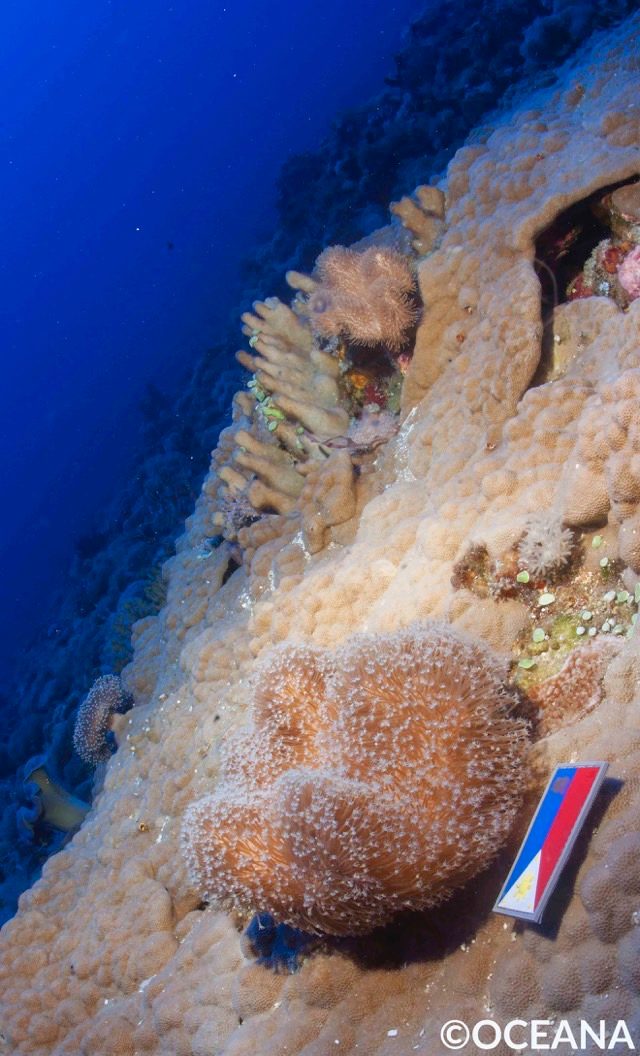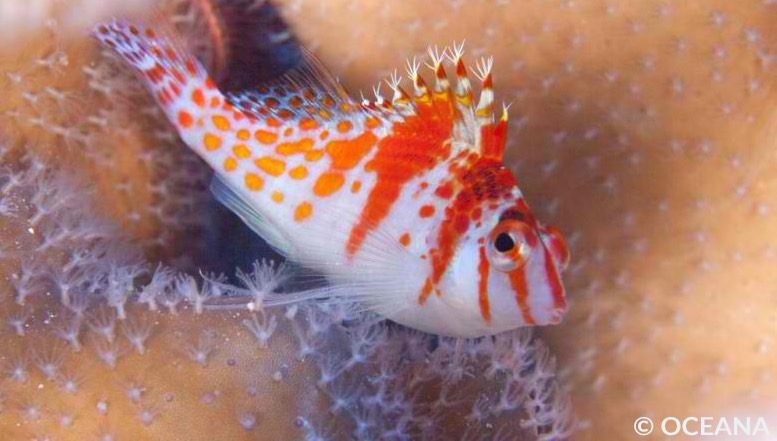SUMMARY
This is AI generated summarization, which may have errors. For context, always refer to the full article.

MANILA, Philippines – The rich biodiversity recently surveyed in Benham Bank – Benham Rise’s shallowest and smallest area – could aid in ensuring the country’s food security, according to a marine scientist.
“What’s amazing about Benham Bank is its coral coverage. The region offers a huge potential for food resources and is different from the typical corals that we see”, said marine scientist Marianne Pan Saniano in an interview on Rappler on Thursday, June 23.
Saniano is a scientist and advocate of Oceana, an international non-profit that focuses on marine conversation and protection.
Oceana recently joined the second Philippine government expedition to Benham Bank on May 23 to May 31, where they provided camera equipment and software that helped the divers and scientists gather data on the marine ecosystem and the bank’s biodiversity.
Scientists found that the underwater sea mount, located on the eastern cost of Luzon, is blanketed with terraces of corals and algae. This serves as a natural refuge for a variety of fish and other sea creatures.
Saniano stressed the importance of protecting this pristine habitat from destruction or poor management. She said the big issue at stake was ensuring the country’s food security and coral reefs have a large role to play in the food supply chain.
“If the reefs will be destroyed, this will eliminate the economically important fish and other food sources underwater.”
Exploration and conservation
The first Benham expedition took place in 2014, two years after the United Nations (UN) approved the Philippines’ undisputed claim on the region on April 12, 2012.

This year, with the help of new technology, scientists discovered and surveyed the other features of the sea mount.
Oceanographers and experts from the Bureau of Fisheries and Aquatic Resources (BFAR), University of the Philippines (UP) Diliman, UP Los Banos, and Oceana left May 23 on board a Philippine research vessel and went on a week-long trip to analyze Benham Bank’s ecological region and its biological features.
Technical divers from the Philippine Navy and Philippine Coast Guard surveyed the area and took video of the layers of coral using remotely operated vehicles (ROV) as well as a baited remote underwater video system (BRUVS) equipment.
The team documented the large mesophotic ecosystem – an area under water that’s not too shallow, but not too deep and where light still shines – that has facilitated the growth of the table corals. Because the reef is at a depth of 50 meters, it has not been damaged by surface waves or typhoons.
Elsewhere in the Benham rise, however, there is enhanced interest in the oil and natural gas reserves underneath. This could increase the threat to the region’s biodiversity. But, Saniano believes exploration and conservation can co-exist if managed well.
“We hope that a good management plan will be given to Benham Rise, and protection be given to Benham Bank as its core zone,” said Saniano.

Biodiversity’s promise
The Philippines is recognized around the world as a hotspot for biodiversity. The country’s archipelagic waters lie within the coral traingle that includes the waters of Indonesia, Malaysia, Papua New Guinea, and East Timor.
Aside from being rich in beautiful coral reefs, it is also a commerically active source of food, most especially the Bluefin tuna and other in-demand fish species.
Scientists have warned, however, that overfishing in these waters is exerting undure pressure on the ecosystem and may lead to the total depetion of fish stock. Maintaining the region’s rich biodiversity is the only way to prevent this from happening, according to them.
“Higher biodiversity is equivalent to a stronger ecosystem. Without biodiversity, there will be an imbalance. There will be overpopulation of species underwater and extinction for some,” added Saniano.
To keep the area protected, Saniano said it is important to have the right laws in place, survey the area from time to time, and monitor the exploration and extraction of oil and natural gas.
For the general public, Saniano called for teaching the youth about environmental protection and discipline, so that they know that small actions like throwing trash in bins instead of on the street, can help protect the environment from harm.
“The region is not limitless. If we don’t take care of it, we won’t have food for the future. If we manage it properly, we can make sure to have food for today, fortomorrow. People should also observe simple things like not throwing away garbage which pollute the oceans,” said Saniano.
She added, “if you save the oceans, you feed the world.” – Rappler.com
Mary Gleefer Jalea is a Rappler intern and a student at the University of Asia and the Pacific.
Add a comment
How does this make you feel?
There are no comments yet. Add your comment to start the conversation.